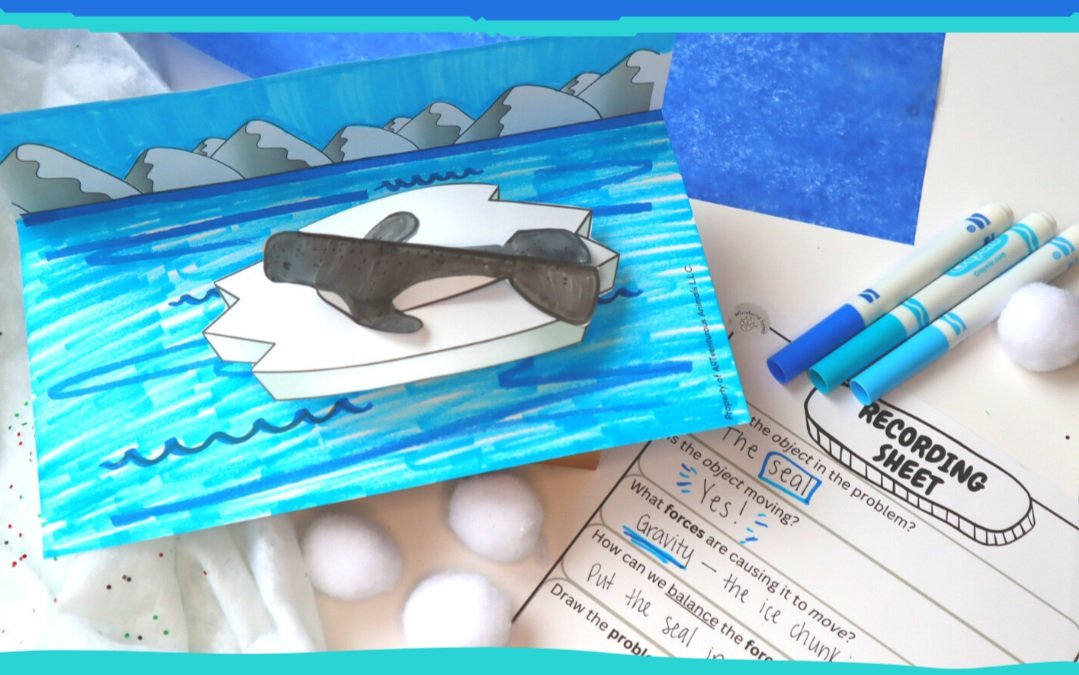How to Teach BALANCED and UNBALANCED Forces to Kids
Balancing Act — Balanced and Unbalanced Forces NGSS Project
Looking for an easy explanation of this NGSS third grade concept?
Scroll down to see my helpful tips and teaching examples. I personally think #3 is most helpful!
Grab your kids’ attentions with something they enjoy.
Read them a short story, bring in some animal facts, or incorporate whatever your child is interested in! Here are some go-to attention getters that I use with my online classes DAILY.
2. Review over forces they already know.
If a child doesn’t know what a force is, how can they balance it?? Make sure your kids understand and can explain…
-push
-pull
-gravity
-motion
You can do this with an anchor chart or oral review. You could even grab a YouTube video to watch! I don’t teach with a lot of technology typically, but when I’m teaching abstract concepts I will.
Suggestions below:
-YouTube Video about forces
Push and Pull for Kids | Force and Motion by BuzzwithBee
3. Teach them about balanced and unbalanced forces with real-life examples.
Kids may not realize it, but balanced and unbalanced forces are all around us!
You can use a see-saw, scales, or just motion in general as examples.
Here’s my explanation that I used in my Balancing Act Project Lesson. Feel free to use it while explaining this concept to your kids!
4. Have them explain in their own words how they would balance forces.
Here’s the key to project-based learning—making sure the student can re-construct the knowledge just given to them.
This starts with asking them to verbally give you examples of how to balance forces. They might say:
-same weight on a see-saw
-push from both sides
-stop a ball from rolling
-use my hands to balance on one foot
The key here is to let them express what they know, not to correct them in order to make it perfect. That’s what the hands-on project is for!
5. Give them an opportunity to practice balancing forces in a hands-on way.
True understanding for kids happens when they use their hands. The combination of visual, auditory, and kinesthetic learning ensures that they will retain the knowledge forever.
BONUS: They’ll have so much fun creating the project!
🧡 PROJECT SUGGESTIONS FOR YOUR HOMESCHOOL/CLASS 🧡
Have one child hold a popsicle stick on the end of their finger. Add paper clips to one side and then the other. Experiment with balance. (5 min.)
Borrow a scale from a farmer’s market or order one online. Gather palm-sized items from around your home. Guess which will weigh the most, least, and so on. Test out which ones balance each other out. (15-20 min.)
For an in-depth study, grab my Balancing Act Project Lesson. It has learning pages, exit tickets, project explanations, guides, and templates. Check it out in my below! (2 days of science class)
Was this helpful?
Let me know in the comments below!
If you have any clarifying questions, ask below or email me at artventurousanimals@gmail.com
Check out my other “How To Teach” blogs here!








